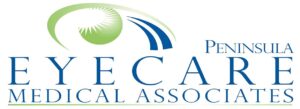A Brief Look at Correctable Vision Problems
Who wouldn’t love to have perfect vision? Being able to see whatever you want without glasses or contacts would be fantastic. Unfortunately, the amazing laser vision of Superman only occurs in comic books. Few people can see perfectly, and most of us experience at least one vision condition at some point during our lives.
Our eyes are incredibly complicated and even the slightest disruption in the lens, cornea, retina, or iris can drastically change your vision. The good news is that many vision conditions can be corrected through a comprehensive eye exam followed by the correct prescription for glasses or contact lenses. Below are some of the most common, correctable vision problems.
Usually Treatable with Prescription Glasses or Contacts:
- Presbyopia: This age-related condition causes a decrease in the eye’s ability to sharply focus on nearby objects due to the hardening of the eye’s lens. Read Presbyopia: The 40-something Eyesight Challenge for more information.
- Myopia: Commonly called “nearsightedness,” this vision condition results in seeing nearby objects clearly and faraway objects poorly.
- Astigmatism: This visual impairment is the result of an irregular curvature in the eye. Instead of being shaped like a basketball, the eye is shaped more like a football. Astigmatism affects the way the eye processes light and results in varying degrees of blurred vision.
- Hyperopia: Commonly called “farsightedness,” this vision condition results in seeing faraway objects clearly and nearby objects poorly.
May Need Treatment Beyond Prescription Lenses:
- Amblyopia: Commonly called “lazy eye,” this condition surfaces at an early age and involves favoring one eye over the other. When this occurs, the neglected eye rarely develops like it should, and it appears “lazy” next to the properly functioning eye.
- Strabismus: Most commonly referred to as “crossed eyes,” this occurs when the muscles that surround the eye don’t work well together. As a result, each eye can simultaneously look in different directions, sending two different images to the brain.
- Color Deficiency: The main characteristic of this condition, typically called “colorblindness,” is an inability to discern certain colors. Confusing red and green is the most common type of colorblindness. Read Color "Blindness" Not Really Blindness At All for more information.
- Nyctalopia: Nyctalopia, or “night blindness,” is the inability to see well in poorly lit areas. Those with nyctalopia often have trouble driving at night. Night blindness is not actually a disorder, but a symptom of other eye disorders, such as cataracts or nearsightedness.
- Photophobia: Those with photophobia, also called “light sensitivity,” often experience symptoms like headaches and eye strain when exposed to direct or bright light. Similar to night blindness, photophobia is not an eye disease; it’s a symptom of underlying conditions such as inflammation of the eyes.

